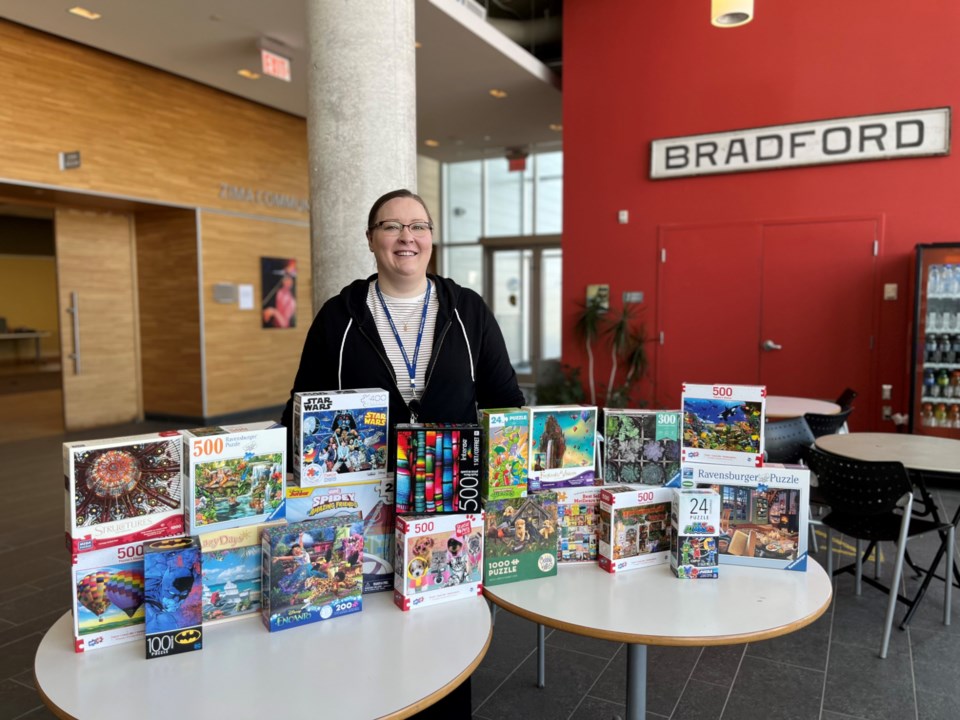The COVID-19 pandemic may be over, but puzzling is still a favourite pastime for many, especially in the Bradford area.
This weekend, the Bradford West Gwillimbury Public Library is excited to host our first-ever Puzzle Mania event in the Zima Room and Atrium on Saturday, May 13, from 11 a.m. to 1 p.m.
In case you don’t know, there is a subculture of puzzlers in the Bradford West Gwillimbury area who enjoy doing and trading puzzles.
I know because I am part of one of the local trading groups and am frequently trading them on behalf of my mother-in-law, who is an avid puzzler.
I never understood the hype until recently, when I casually did one on my own at home.
Who knew it could be so addicting?
I spent the better part of my weekend trying to put the pieces together and neglecting all my chores. Time seemed to fly by while doing it, as I kept telling myself, “Just a few more pieces,” before pulling myself away. I can see why this was so popular during our months stuck in quarantine. Puzzles were also quite popular in the 1930s during the Great Depression since they were a cheap form of entertainment.
I enjoy all kinds of puzzles, crosswords, Wordle, Sudoku, and the like, but jigsaw puzzles are more tangible fun. There’s something so satisfying about putting the pieces physically together.
Who created the jigsaw puzzle anyway? I was curious and decided to do some research.
I found an interesting article from the Los Angeles Public Library about the history of jigsaw puzzles.
I learned the jigsaw puzzle was invented around 1760 by a man named John Spilsbury, who was a London cartographer and engraver, as a way of teaching people geography by dissecting maps with a handsaw. The name ‘jigsaw puzzle’ didn’t come to be until 1906, after the jigsaw was invented in 1855.
It wasn’t until the 1860s and ’70s that pictures of various subjects like animals and plants started being printed onto puzzle pieces.
Another interesting fact: Even though it’s common to see 1,000-piece puzzles, they don’t contain exactly 1,000 pieces. Most have 1,008 or 1,026 to make the correct shape.
Are you an avid puzzler? Then come by the library this Saturday, May 13, from 11 a.m. to 1 p.m. and try your hand at a variety of puzzles we will have set up in the Zima Room.
Have an old puzzle lying around? Trade it in for a new-to-you one at our swap station in the café.
I will be there with my mom and mother-in-law, who have slowly converted me into a puzzler. It’s my new favourite way to unwind and relax.
Hope to see you there.
’Til next week, happy reading (and puzzling).
Natasha Philpott is the marketing and communications co-ordinator at the Bradford West Gwillimbury Public Library.



